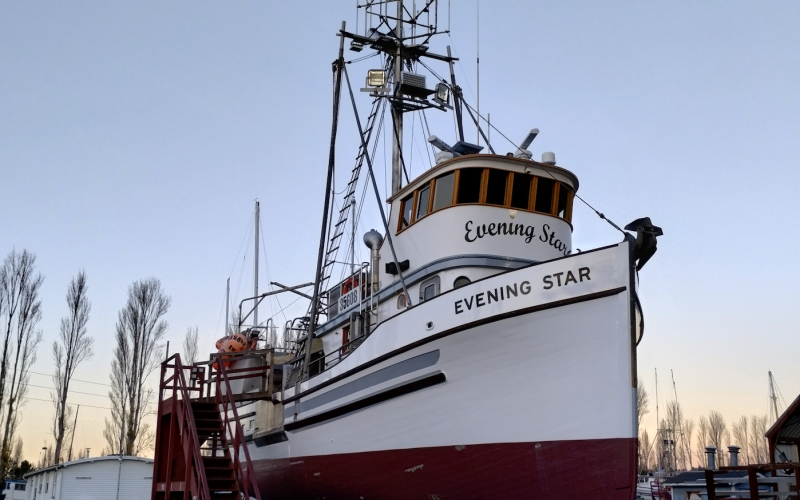Two wooden longliners were among the vessels being worked on last month at Washington’s Port Townsend Shipwrights Co-Op, a yard that specializes in repairing older wooden boats.
In November, the 59-foot wooden longliner Evening Star was hauled out for its yearly repairs at the yard in Port Townsend. The work included new steamed white oak frames in the engine room, Port Orford cedar planks, and amidships on the port side, Sapele covering boards. The vessels also had hydraulic repairs and basic maintenance done.
The Evening Star was joined by another wooden longliner, the 65-foot St. John II that was getting Port Orford cedar planks along the sheer line and a new plywood and fiberglass foredeck. The propeller was also rebalanced. The Evening Star and the St. John II were both built in 1944 and, like a lot of older wooden fishing vessels that work Alaska and Washington waters, show up every year in the off season at the co-op for needed repairs or just general maintenance.
The Port Townsend Shipwrights Co-Op was started in 1981 by eight guys, each one an owner, primarily to repair wooden boats. The owners’ number is now up to twelve, and there’s a lot of work with metal fabrication. But it’s the wooden boat tradition that continues to draw older wooden fishing boats to the co-op. In 2023, besides the Evening Star and St. John II, “a handful of traditional halibut schooners were in,” says Melanya Nordstrom, the co-op’s social media and advertising representative. Compared to the Evening Star and the St. John II, the halibut schooners are the old-timers at the dock.
They included the 84-foot Polaris, the 76-foot Seymour, and the 86-foot Vansee, all built in 1913, as well as the 62-foot Grant, built in 1924. Nordstrom says this year it was mostly general maintenance work on the schooners, though the Seymour and Vansee received new decking. The Polaris also got decking and new Sapele planking. The Polaris, Vansee and Seymour were also in for their yearly recorking, where each year about one-quarter of the hull is recorked.
“They make a plan where every year they do a quarter of the boat and then it will be strong and solid for years to come,” says Nordstrom.







